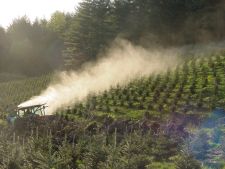Airblast Mistblowers
go.ncsu.edu/readext?298608
en Español / em Português
El inglés es el idioma de control de esta página. En la medida en que haya algún conflicto entre la traducción al inglés y la traducción, el inglés prevalece.
Al hacer clic en el enlace de traducción se activa un servicio de traducción gratuito para convertir la página al español. Al igual que con cualquier traducción por Internet, la conversión no es sensible al contexto y puede que no traduzca el texto en su significado original. NC State Extension no garantiza la exactitud del texto traducido. Por favor, tenga en cuenta que algunas aplicaciones y/o servicios pueden no funcionar como se espera cuando se traducen.
Português
Inglês é o idioma de controle desta página. Na medida que haja algum conflito entre o texto original em Inglês e a tradução, o Inglês prevalece.
Ao clicar no link de tradução, um serviço gratuito de tradução será ativado para converter a página para o Português. Como em qualquer tradução pela internet, a conversão não é sensivel ao contexto e pode não ocorrer a tradução para o significado orginal. O serviço de Extensão da Carolina do Norte (NC State Extension) não garante a exatidão do texto traduzido. Por favor, observe que algumas funções ou serviços podem não funcionar como esperado após a tradução.
English
English is the controlling language of this page. To the extent there is any conflict between the English text and the translation, English controls.
Clicking on the translation link activates a free translation service to convert the page to Spanish. As with any Internet translation, the conversion is not context-sensitive and may not translate the text to its original meaning. NC State Extension does not guarantee the accuracy of the translated text. Please note that some applications and/or services may not function as expected when translated.
Collapse ▲Types of Sprayers
Airblast Mistblowers
 Airblast sprayers use a combination of air propelled by a high speed fan and liquid to deliver the pesticide to trees. Nozzles operate under low pressure which deliver the spray droplets directly into the high-speed airstream. The blast of air shatters the drops into finer droplets and blows them into the field. In Christmas trees, typically airblast sprayers direct spray only to one side as the sprayer moves forward, and are mounted to a tractor and powered through the PTO. Tank capacity may be 100 to 400 gallons. An airblast sprayer may cover a swath of up to 100 feet.
Airblast sprayers use a combination of air propelled by a high speed fan and liquid to deliver the pesticide to trees. Nozzles operate under low pressure which deliver the spray droplets directly into the high-speed airstream. The blast of air shatters the drops into finer droplets and blows them into the field. In Christmas trees, typically airblast sprayers direct spray only to one side as the sprayer moves forward, and are mounted to a tractor and powered through the PTO. Tank capacity may be 100 to 400 gallons. An airblast sprayer may cover a swath of up to 100 feet.
Advantages:
- quickly covers large spray areas
- uses less water
- lower labor costs
- less worker exposure to pesticides as fewer workers are needed to apply materials and tractor cabs can be equipped with safety features
- can apply materials at night when pollinators are not present
Disadvantages:
- field must be laid out with adequate access roads running parallel to each other
- potential drift hazard
- uneven distribution across rows — coverage of first few rows often poor
- uneven distribution from top to bottom and around all sides of the tree especially in large, heavy density trees
- poorer control in the interior of blocks
- may only suppress and not completely control difficult to control pests such as balsam woolly adelgid and elongate hemlock scale
- hard to confine to limited target area
- requires the use of 40 to 50 gallons of water per acre for effective control of insects which may be hard to deliver
- spraying over uneven terrain may result in uneven coverage
Most Effective Spray Pattern:
To get the best control of pests, treat 12 to 15 and no more than 20 rows at a time. Treat trees from opposite directions. Not having adequate access roads is the most common cause of spray failure. Use of a drift reduction adjuvant will not only decrease drift but result in more even coverage.


